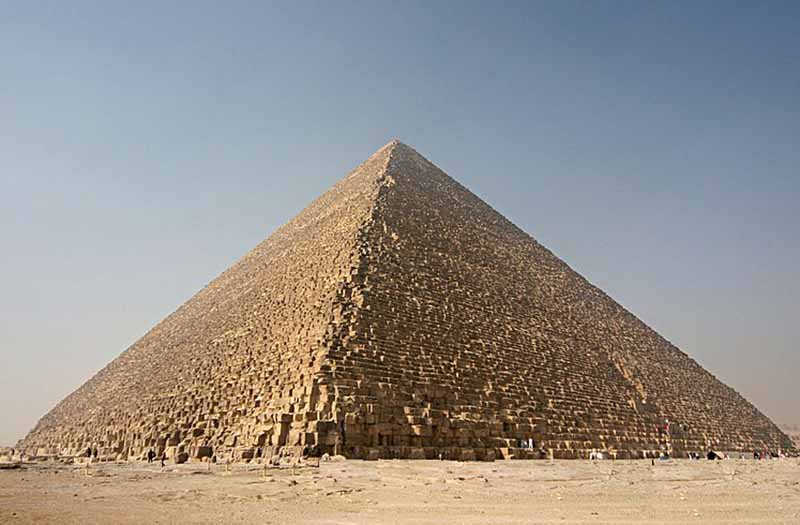
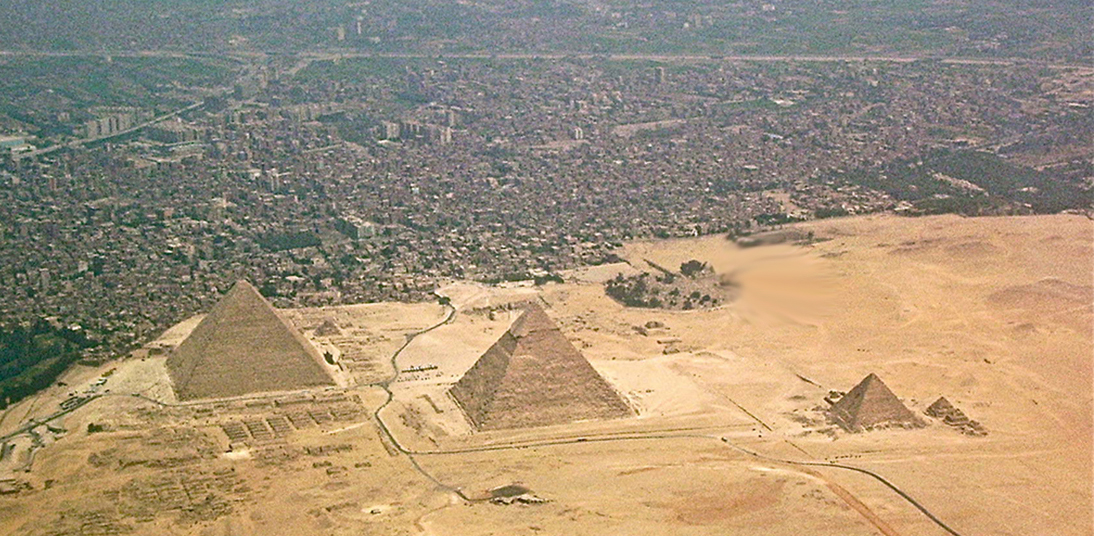
The Great Pyramid is on the Left
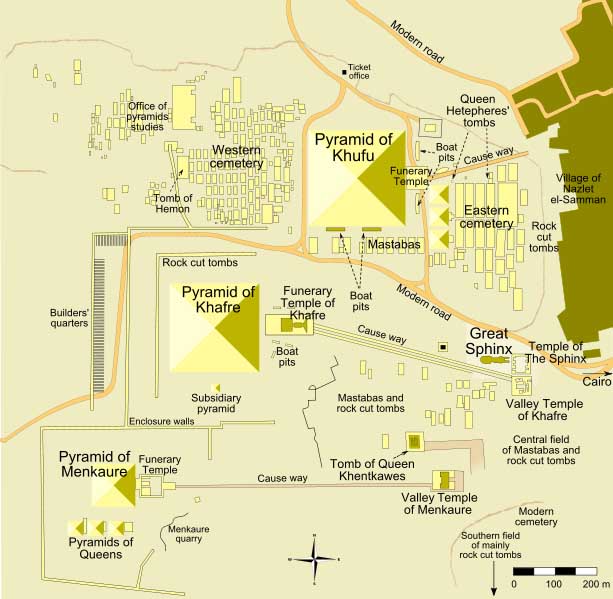


The Great Pyramid is on the Left

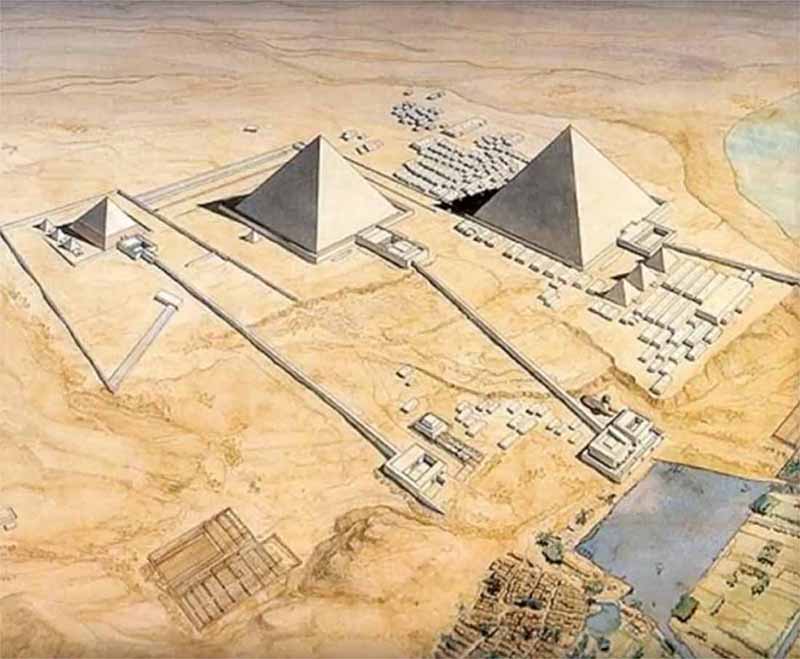

Fibonacci Sequence - Golden Mean
In the world of pseudoscience it is believed that ancient aliens came to the planet and constructed the pyramid either a power source or something else that allows them to go back-and-forth between this reality and another. There are no inscriptions. It doesn't appear to be used as a burial chamber even though a stone sarcophagus is found in the Kings Chamber.
It was designed following what we called Sacred Geometry - the Golden Ratio aligning to other major pyramid on the planet as well as Orion. To this day the Great Pyramid of Giza remains an enigma.
The Great Pyramid at Giza, also called Khufu's Pyramid or the Pyramid of Khufu, and Pyramid of Cheops, is the oldest and largest of the three pyramids in the Giza Necropolis bordering what is now Cairo, Egypt, and is the only remaining member of the Seven Wonders of the Ancient World. It is believed the pyramid was built as a tomb for Fourth dynasty Egyptian King Khufu (Cheops in Greek) and constructed over a 20 year period concluding around 2560 BC.
The Great Pyramid of Giza is the oldest and largest of the three pyramids in the Giza pyramid complex bordering present-day Giza in Greater Cairo, Egypt. It is the oldest of the Seven Wonders of the Ancient World, and the only one to remain largely intact.
Based on a mark in an interior chamber naming the work gang and a reference to the Fourth Dynasty Egyptian pharaoh Khufu, Egyptologists believe that the pyramid was built as a tomb over a 10- to 20-year period concluding around 2560 BC. Initially standing at 146.5 metres (481 feet), the Great Pyramid was the tallest man-made structure in the world for more than 3,800 years until Lincoln Cathedral was finished in 1311 AD. It is estimated that the pyramid weighs approximately 6 million tonnes, and consists of 2.3 million blocks of limestone and granite, some weighing as much as 80 tonnes.
Originally, the Great Pyramid was covered by limestone casing stones that formed a smooth outer surface; what is seen today is the underlying core structure. Some of the casing stones that once covered the structure can still be seen around the base. There have been varying scientific and alternative theories about the Great Pyramid's construction techniques. Most accepted construction hypotheses are based on the idea that it was built by moving huge stones from a quarry and dragging and lifting them into place.
There are three known chambers inside the Great Pyramid. The lowest chamber is cut into the bedrock upon which the pyramid was built and was unfinished. The so-called Queen's Chamber and King's Chamber are higher up within the pyramid structure. The main part of the Giza complex is a set of buildings that included two mortuary temples in honor of Khufu (one close to the pyramid and one near the Nile), three smaller pyramids for Khufu's wives, an even smaller "satellite" pyramid, a raised causeway connecting the two temples, and small mastaba tombs for nobles surrounding the pyramid.
Chinese Radar Spots Plasma Bubbles Over The Pyramids Of Giza IFL Science - September 10, 2024
The peculiar equatorial phenomenon has been detected from the ground from the other side of the world. The finding of a massive bubble of plasma over Egypt is not itself major news. Tens of these EPBs form every year over that specific region. What’s interesting is from where the bubble was observed. Observations are usually from space to get a global view. They can also be done from the ground, observing the nearest region of the ionosphere. Now, researchers at the Chinese Academy of Sciences report a detection from the island of Hainan, in the South China Sea.
Discovery may explain why Egyptian pyramids were built along long-lost Ahramat branch of the Nile PhysOrg - May 16, 2024

Some 31 pyramids in Egypt, including the Giza pyramid complex, may originally have been built along a 64-km-long branch of the river Nile which has long since been buried beneath farmland and desert. The findings, reported in a paper in Communications Earth & Environment, could explain why these pyramids are concentrated in what is now a narrow, inhospitable desert strip. The Egyptian pyramid fields between Giza and Lisht, built over a nearly 1,000-year period starting approximately 4,700 years ago, now sit on the edge of the inhospitable Western Desert, part of the Sahara. Sedimentary evidence suggests that the Nile used to have a much higher discharge, with the river splitting into several branches in places. Researchers have previously speculated that one of these branches may have flown by the pyramid fields, but this has not been confirmed.
Great Mystery of How Ancient Egyptians Built The Pyramids Finally Appears Solved Science Alert - May 16, 2024

Scientists have discovered a long-buried branch of the Nile river that once flowed alongside more than 30 pyramids in Egypt, potentially solving the mystery of how ancient Egyptians transported the massive stone blocks to build the famous monuments. The 64-kilometre-long river branch, which ran by the iconic Giza pyramid complex among other wonders, was hidden under desert and farmland for millennia. The existence of the river would explain why the 31 pyramids were built in a chain along a now inhospitable desert strip in the Nile Valley between 4,700 and 3,700 years ago. The strip near the ancient Egyptian capital of Memphis includes the Great Pyramid of Giza - the only surviving structure of the seven wonders of the ancient world - as well as the Khafre, Cheops and Mykerinos pyramids.

 Everything about the measurements, design and purpose of the Great Pyramid appears to be more than meets the "eye" - none of which is a coincidence. Visiting the Great Pyramid has both physical, emotional, and subliminal effects on those drawn to its mysteries. Many associate it with extraterrestrials and mythology.
Everything about the measurements, design and purpose of the Great Pyramid appears to be more than meets the "eye" - none of which is a coincidence. Visiting the Great Pyramid has both physical, emotional, and subliminal effects on those drawn to its mysteries. Many associate it with extraterrestrials and mythology.
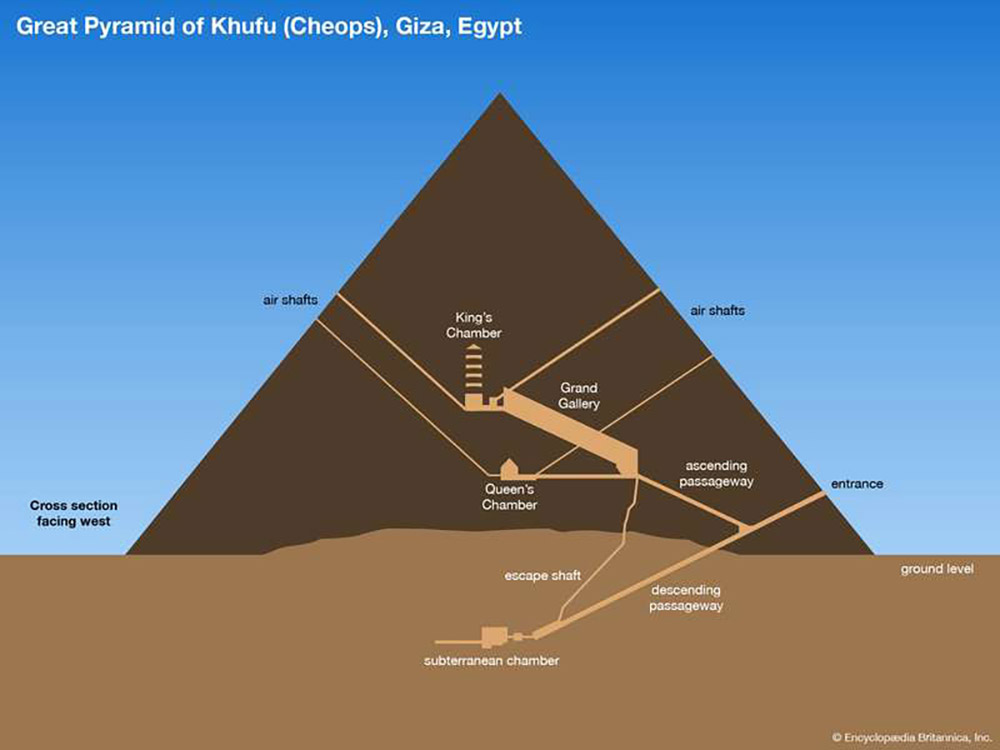
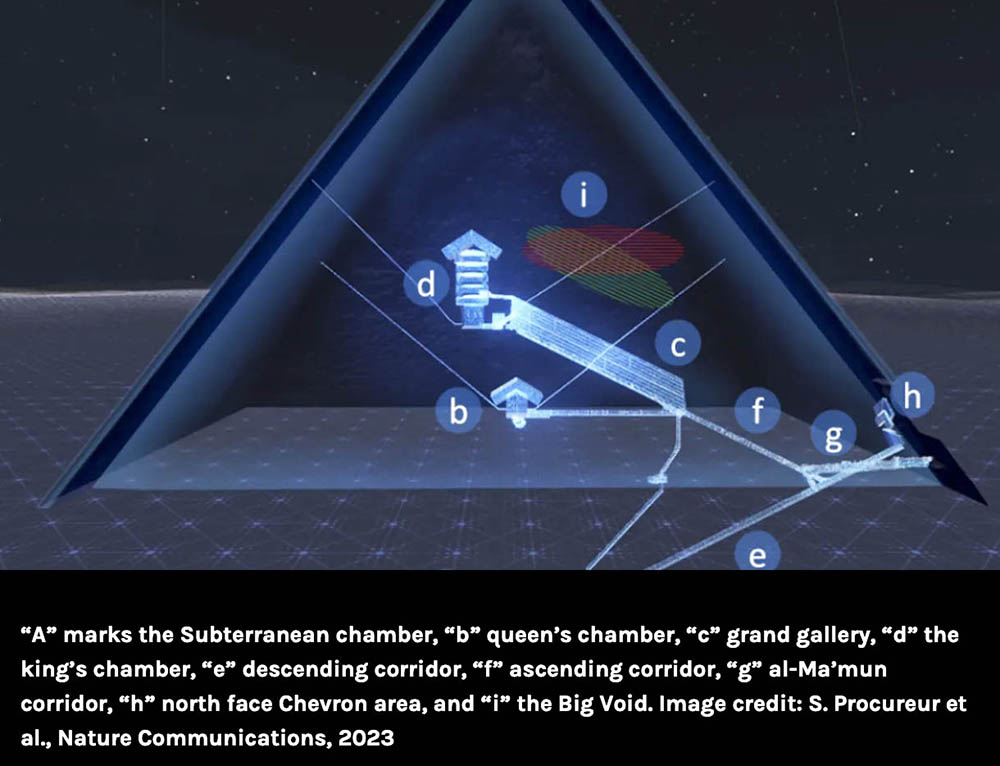
Long-Lost Corridor Inside Great Pyramid Of Giza Revealed By Cosmic Rays
Cosmic rays reveal 'hidden' 30-foot-long corridor in Egypt's Great Pyramid
Live Science - March 2, 2023
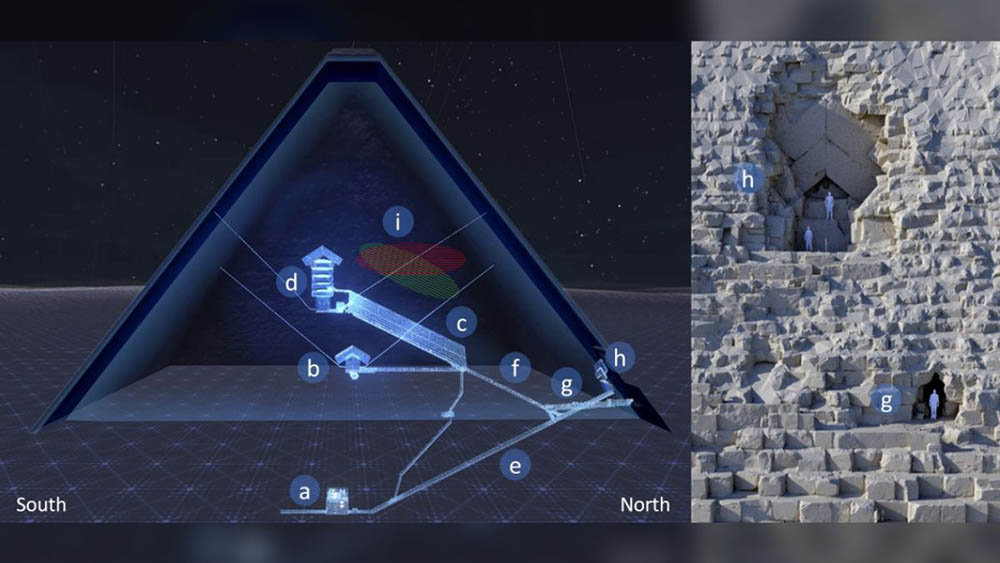
For years, scientists have known there was something hidden above the entrance to the Great Pyramid. Now, they've finally revealed it. A new study reveals that, just above the ancient entrance to the pyramid, there is likely a horizontal chamber that runs for 30 feet (9 m) in length and is 6.6 feet by 6.6 feet (2 by 2 m) in width and height. It is located behind a chevron-shaped structure that is visible outside the pyramid, according to the study
Great Pyramid of Giza's Hidden chamber is revealed: Scientists uncover a mysterious 'big void' in Egypt's 4,500-year-old monument that could reveal its ancient secrets Daily Mail - November 2, 2017
A long-hidden narrow void in the Great Pyramid of Giza has been found by scientists in a discovery that could finally reveal the secrets of the 4,500-year-old monument. The void stretches for at least 30 metres (100ft) above the Grand Gallery - an ascending corridor that links the Queen's chamber to the King's in the heart of the pyramid. It is not known why the void exists or if there are any valuable artifacts inside as it is not obviously accessible. But it has similar dimensions to the Gallery, which is 50 metres (164ft) long, eight metres (26ft) high and more than a metre (3.2ft) wide. Researchers suggest it could be a construction gap - part of a trench that allowed workers to access the Grand Gallery and King's Chamber while the rest of the pyramid was built. The discovery was made after physicists took images of the inside of the pyramid using particles fired to Earth from space. These cosmic particles penetrate the rock in a similar way to X-rays, only much deeper. The collaborative effort, between archaeologists, historians and physicists, has been hailed as the biggest discovery inside the Giza landmark since the 19th century

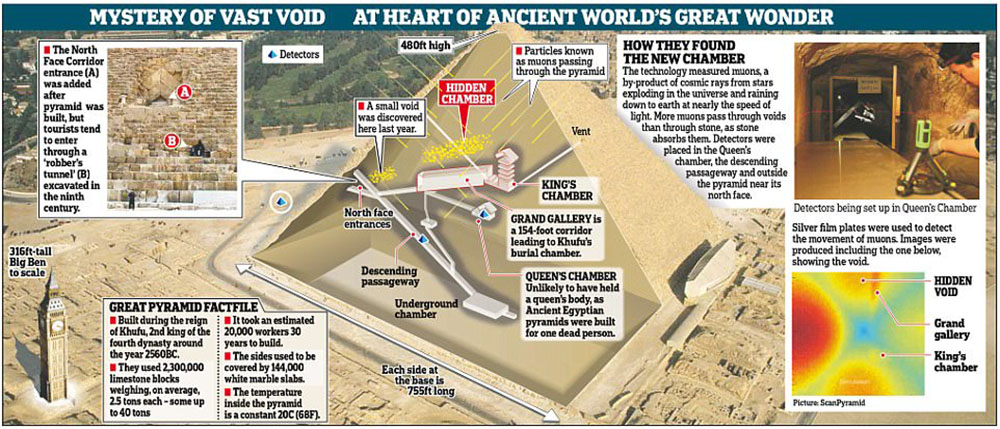
'Big void' identified in Khufu's Great Pyramid at Giza
BBC - November 2, 2017
The mysteries of the pyramids have deepened with the discovery of what appears to be a giant void within the Khufu, or Cheops, monument in Egypt. It is not known why the cavity exists or indeed if it holds anything of value because it is not obviously accessible. Japanese and French scientists made the announcement after two years of study at the famous pyramid complex. They have been using a technique called muography, which can sense density changes inside large rock structures. The Great Pyramid, or Khufu's Pyramid, was constructed during the reign of Pharaoh Khufu between 2509 and 2483 BC. At 140m (460 feet) in height, it is the largest of the Egyptian pyramids located at Giza on the outskirts of Cairo.
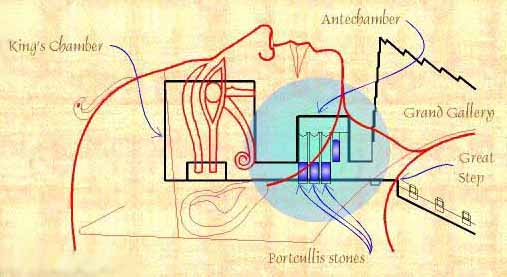
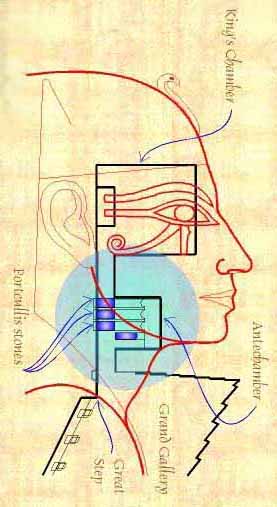

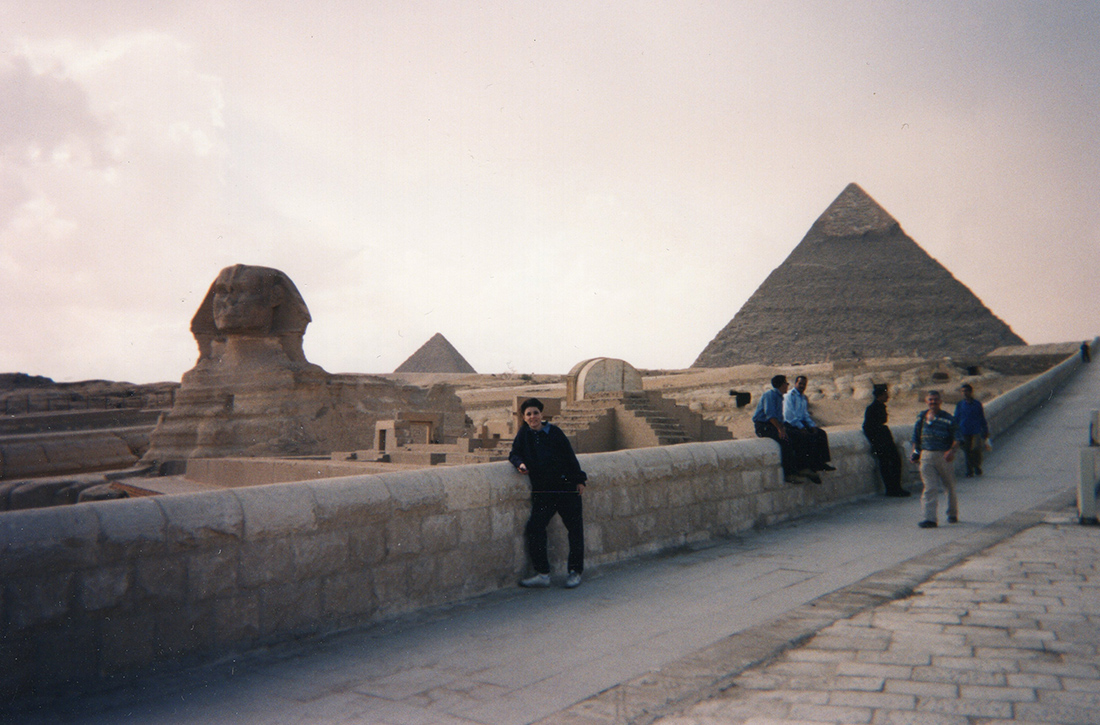

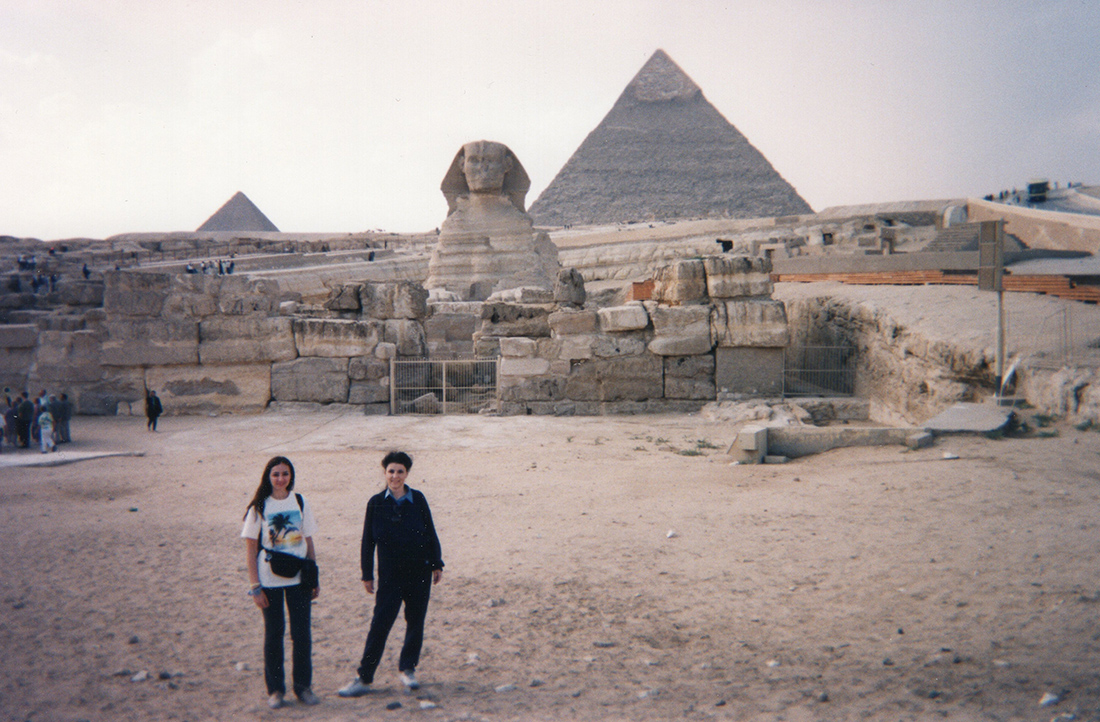
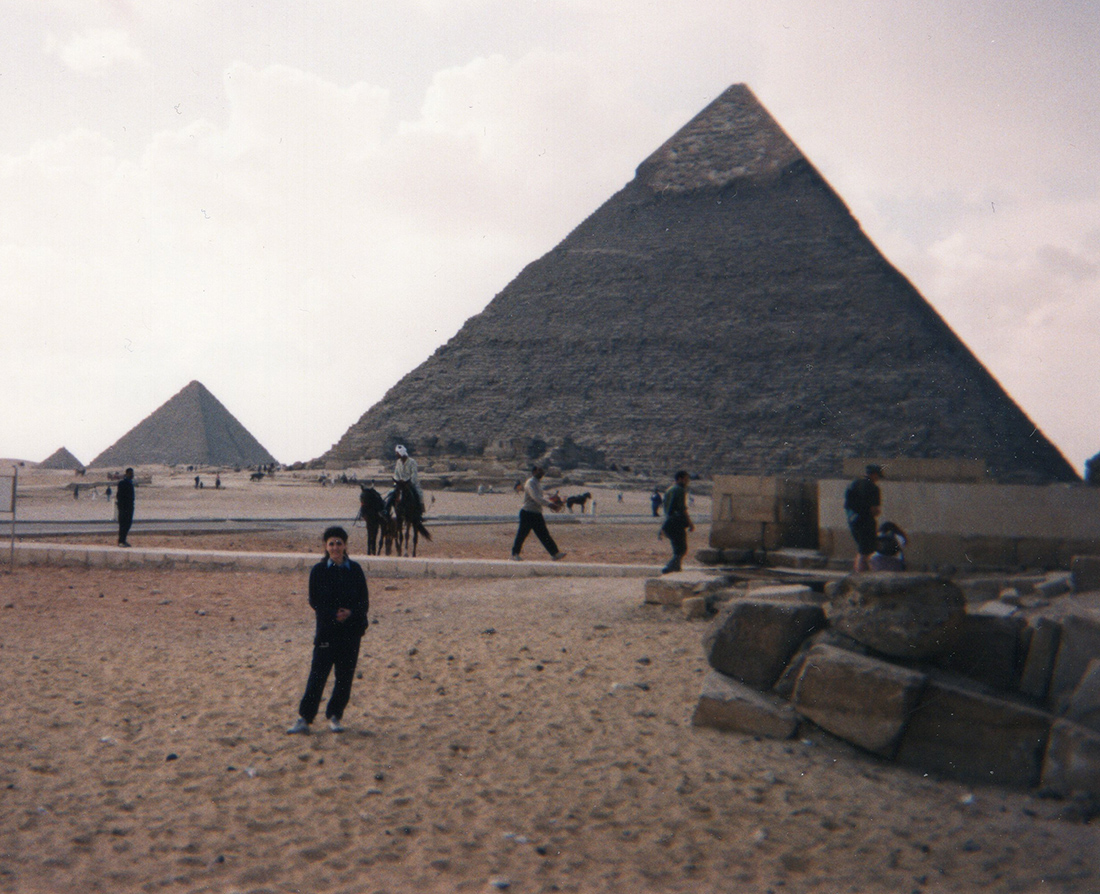
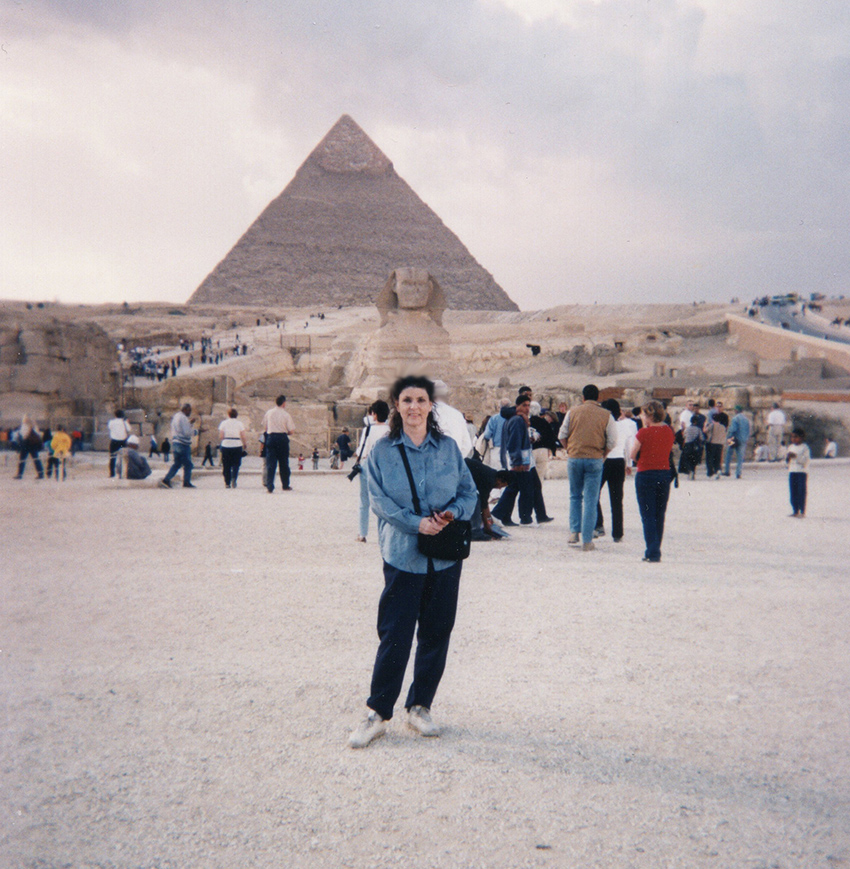

Sitting on a Camel
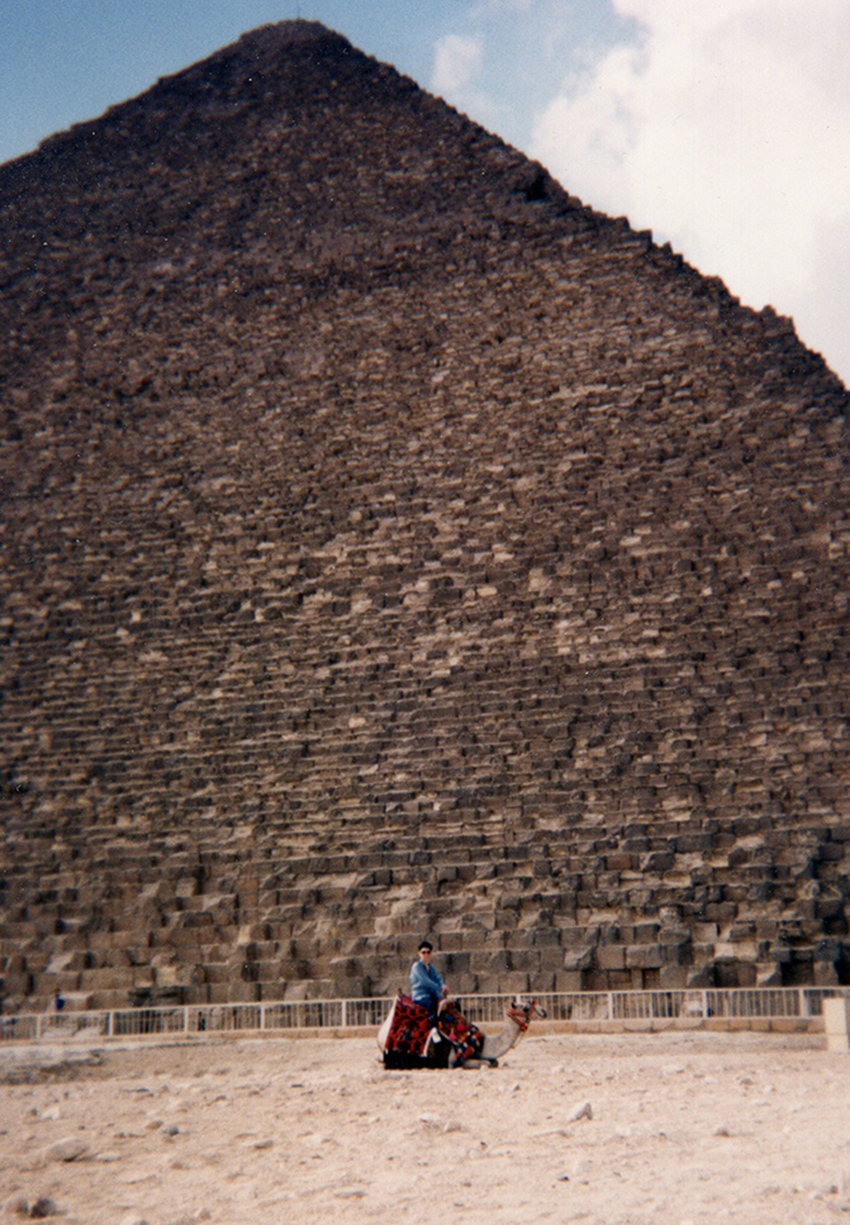
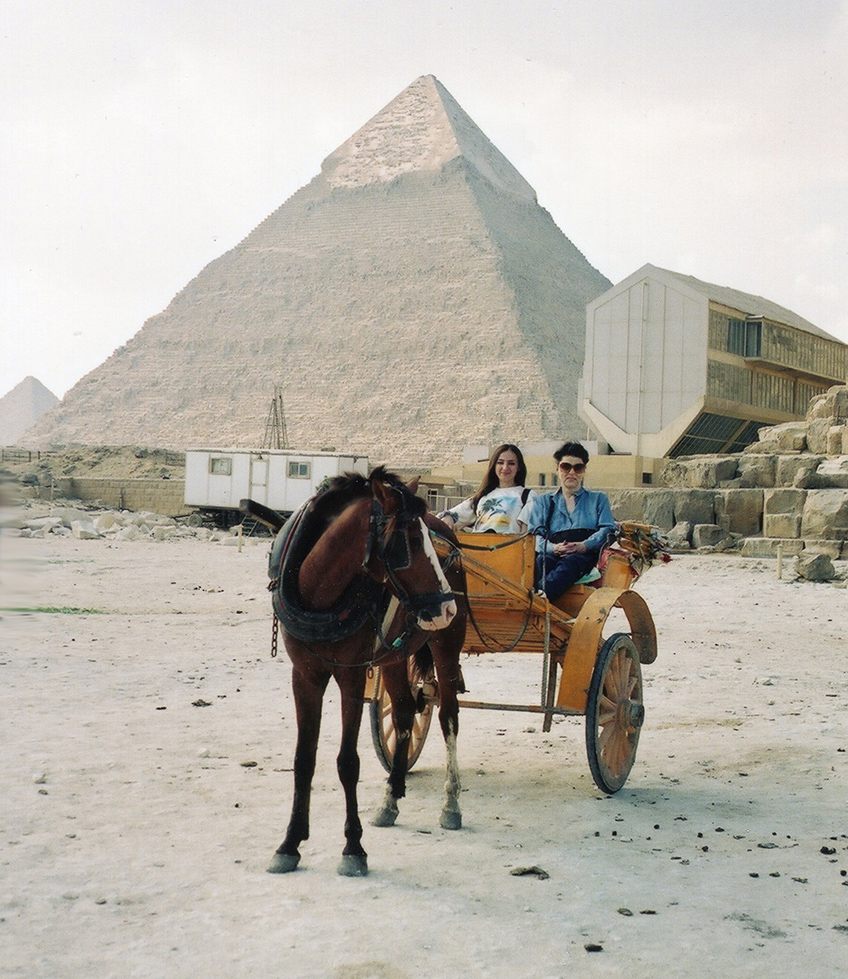
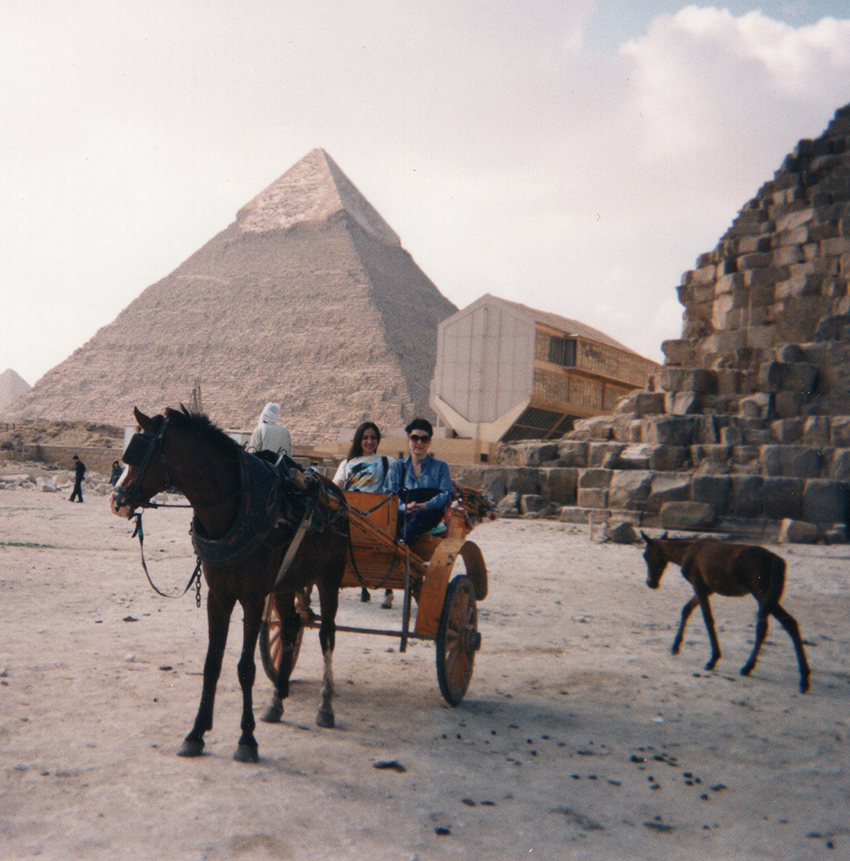

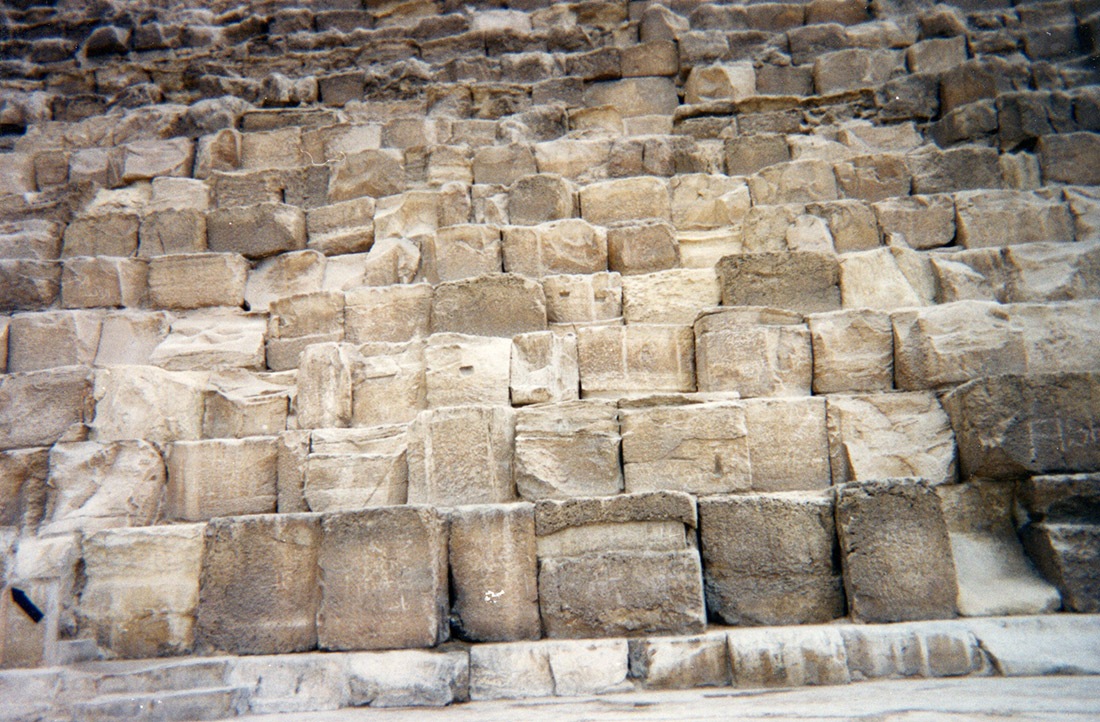
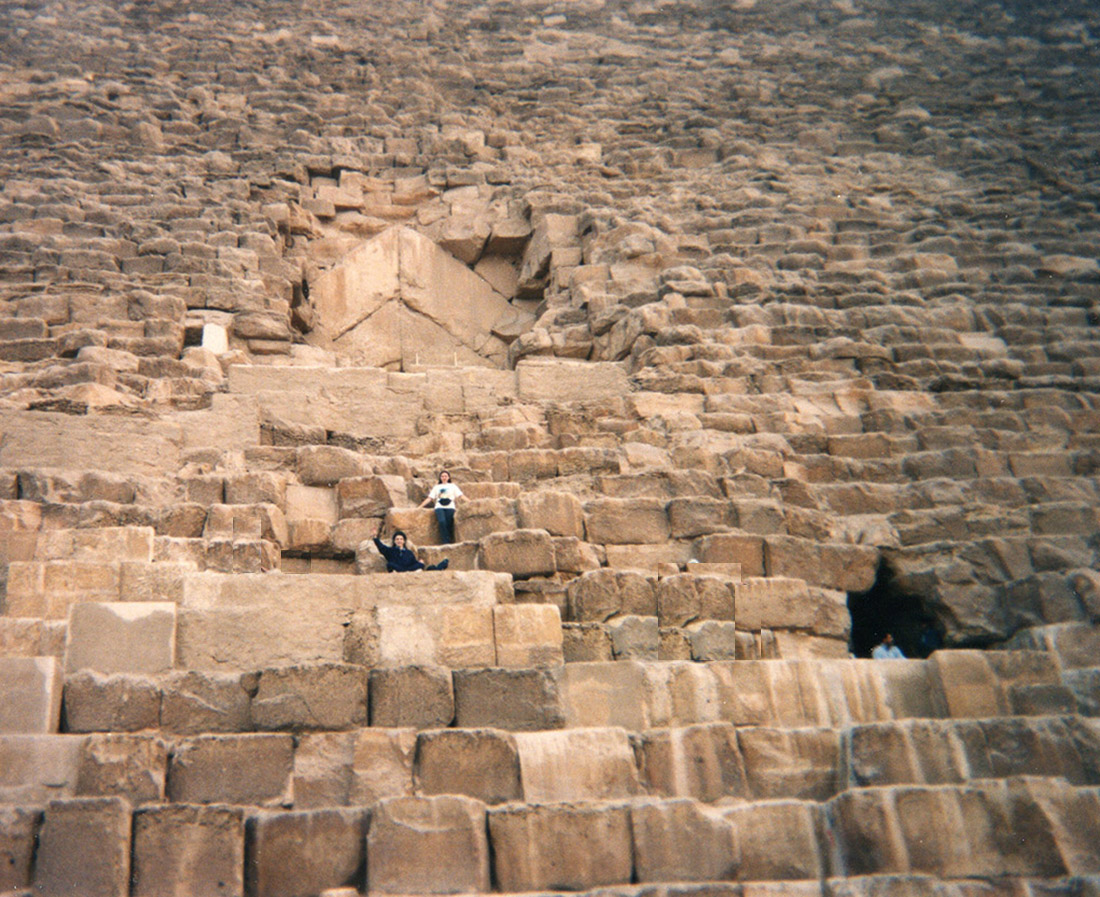
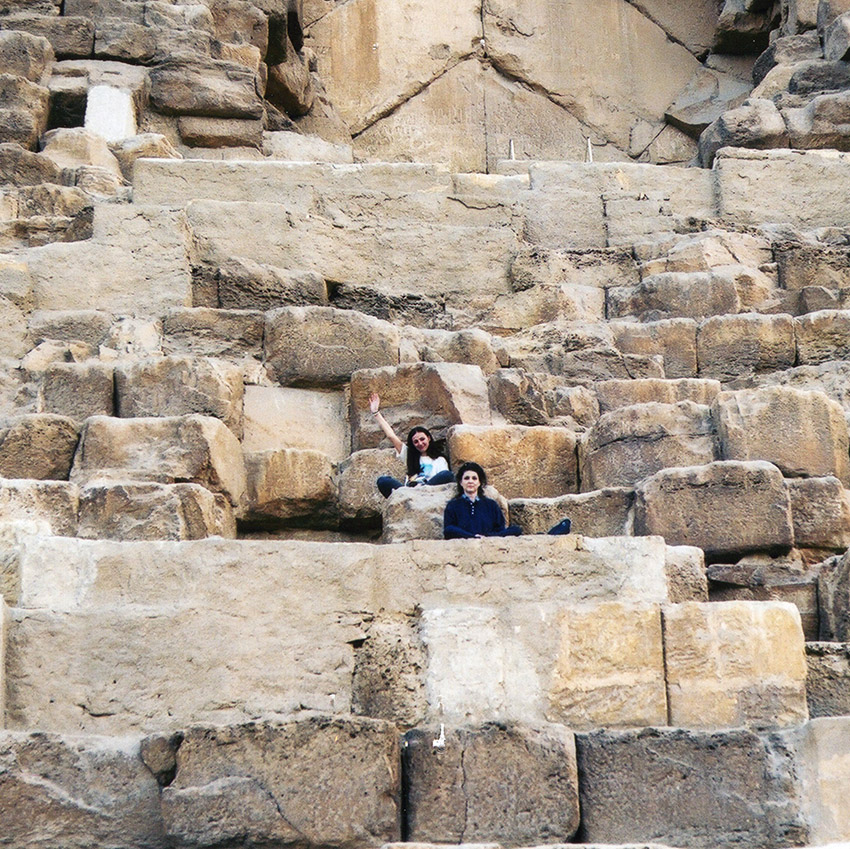
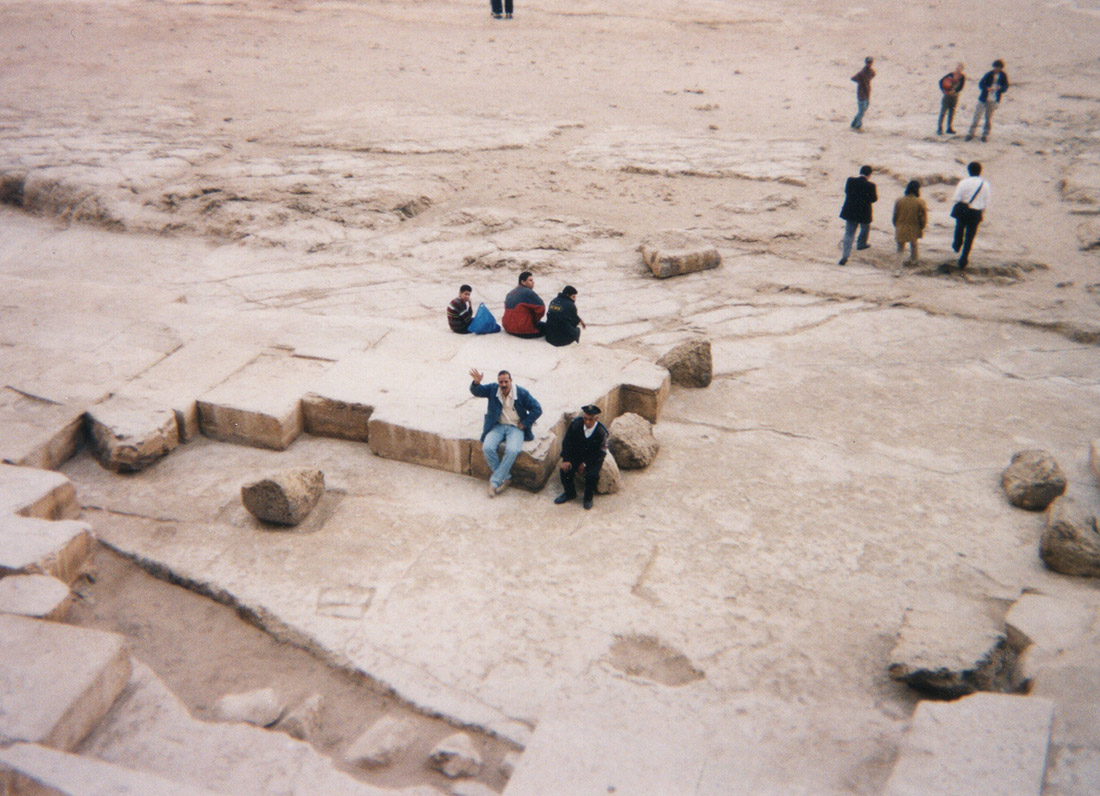
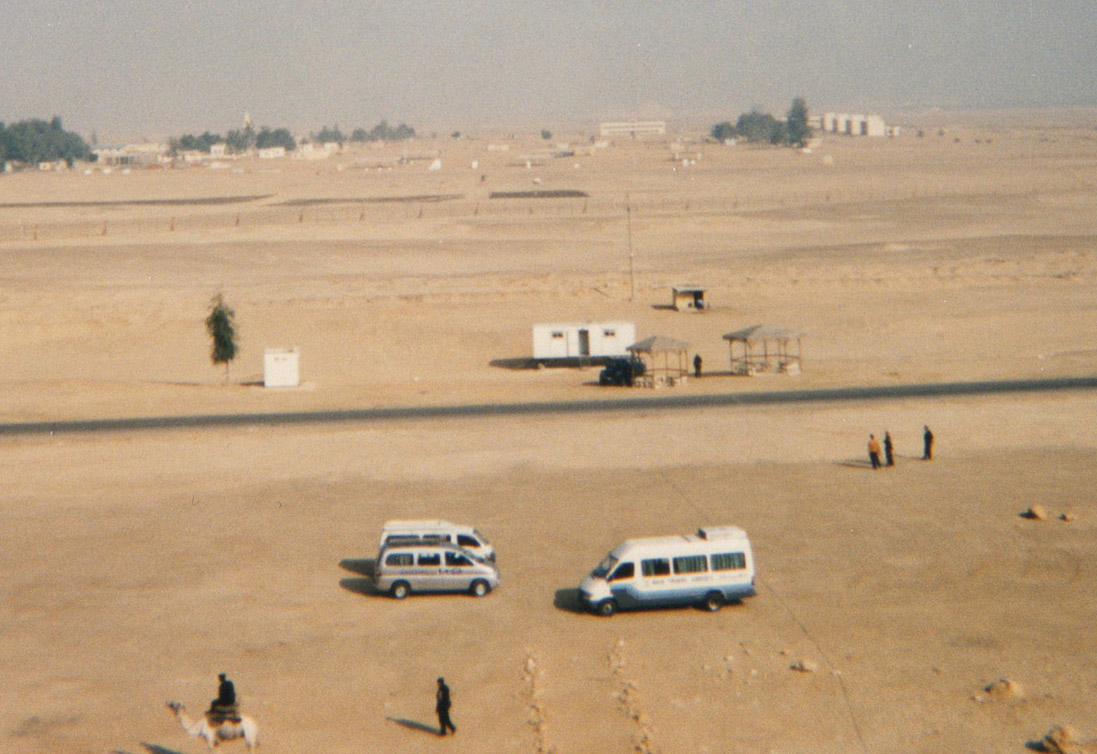
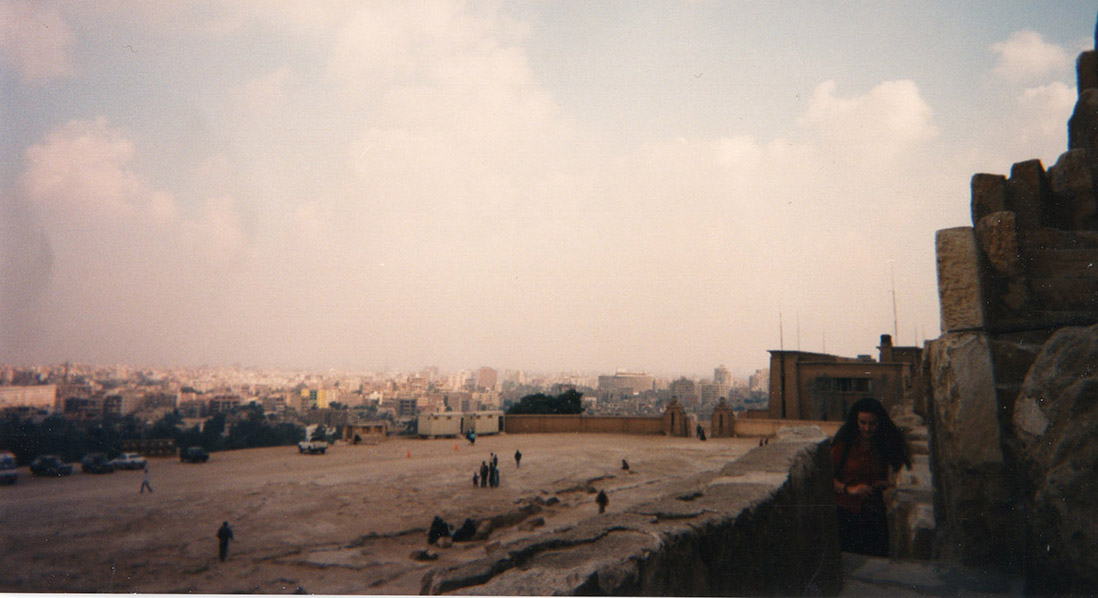


Ellie at Entrance to the Great Pyramid
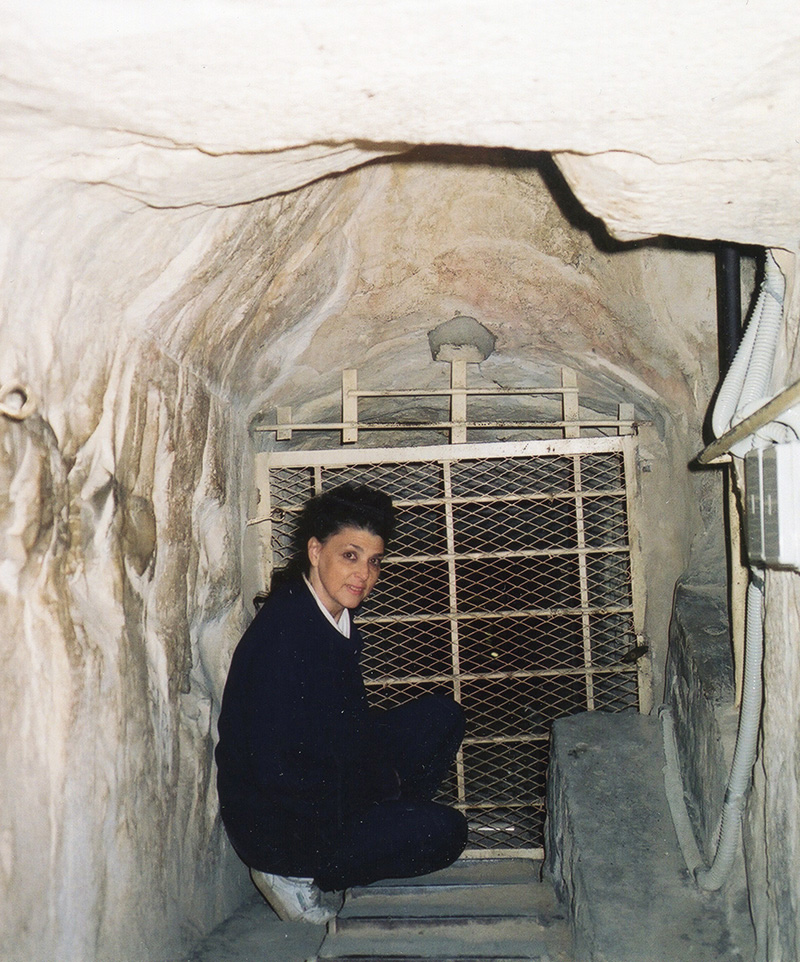
Ellie Visits the Great Pyramid Complex


Is this how Ancient Egyptians built the pyramids? As a ramp is discovered in a 4,500-year-old quarry, a graphic reveals the complex system of pulleys used to drag huge stone blocks hundreds of feet Daily Mail - November 6, 2018
A current graphic reveals the complex system of ramps and pulleys that may have been used by the Egyptians to construct the ancient pyramids. It follows the recent discovery of Ancient Egyptian stoneworking ramps dating back 4,500 years in an alabaster quarry in the country's eastern desert. The system raised stone blocks weighing several tonnes hundreds of feet into the air via enormous sleds, archaeologists believe. This same technology may have allowed the Egyptians to haul blocks up steep inclines to build the Great Pyramid - the only surviving Wonder of the World.
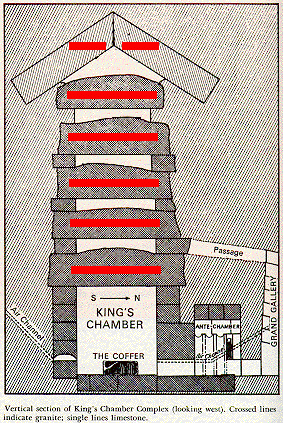

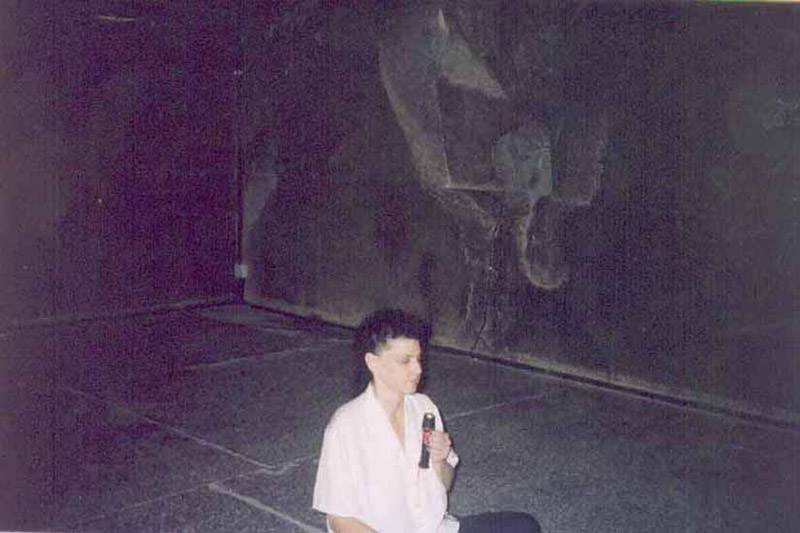
At the end of the lengthy series of entrance ways leading into the interior is the structure's main chamber, the King's Chamber. Some believe that this is consistent with the geometric methods for determining the Golden Ratio (phi), which can be derived from other dimensions of the pyramid, such that if had been the design objective, then automatically follows to 'square the circle'.
The sarcophagus of the King's Chamber was hollowed out of a single piece of Red Aswan granite and has been found to be too large to fit through the passageway leading to the chamber. Whether the sarcophagus was ever intended to house a body is unknown. It is too short to accommodate a medium height individual without the bending of the knees, a technique not practiced in Egyptian burial, and no lid was ever found. The King's Chamber contains two small shafts that ascend out of the pyramid. These shafts were once thought to have been used for ventilation, but this idea was eventually abandoned, which left Egyptologists to conclude they were instead used for ceremonial purposes. It is now thought that they were to allow the Pharaoh's spirit to rise up and out to heaven.
The King's Chamber is lined with red granite brought from Aswan 935 km (580 miles) to the south. There are 5 relieving chambers above the kings chamber. The first one is reached through a breach in the wall at the upper end of the Grand Gallery, this was named the Davidson chamber. Howard Vyse suspected there was another chamber above this when he found that he was able to thrust a long reed through a crack in the ceiling. He blasted through to find 4 more relieving chambers. These chambers were named the Wellington, Nelson, Lady Arbuthnot and Cambell's chambers. The kings chamber and the first 4 relieving chambers have roofs made out granite. Each roof includes 8 or 9 granite slabs weighing 25 to 80 tonnes each. Cambell's chamber has a pented roof made of large limestone slabs. Egyptologists believe they were transported on barges down the Nile river.

The Queen's Chamber is the middle and the smallest, measuring approximately 5.74 by 5.23 meters, and 4.57 meters in height. The chamber is lined with fine limestone blocks and the pented roof is made of large limestone slabs. Its eastern wall has a large angular doorway or niche. Egyptologist Mark Lehner believes that the Queen's chamber was intended as a serdab, a structure found in several other Egyptian pyramids, and that the niche would have contained a statue of the interred. The Ancient Egyptians believed that the statue would serve as a "back up" vessel for the Ka of the Pharaoh, should the original mummified body be destroyed. The true purpose of the chamber, however, remains uncertain.
The Queens Chamber has a pair of shafts similar to those in the King's Chamber, which were explored using a robot, Upuaut 2, created by the German engineer Rudolf Gantenbrink. In 1992, Upuaut 2 discovered that these shafts were blocked by limestone "doors" with two eroded copper handles. The National Geographic Society filmed the drilling of a small hole in the southern door, only to find another larger door behind it. The northern passage, which was harder to navigate due to twists and turns, was also found to be blocked by a door.
The "unfinished chamber" lies 27.5 meters below ground level and is rough-hewn, lacking the precision of the other chambers. Egyptologists suggest the chamber was intended to be the original burial chamber, but that King Khufu later changed his mind and wanted it to be higher up in the pyramid.
The Great Pyramid of Giza is the main part of a complex setting of buildings that included two mortuary temples in honor of Khufu (one close to the pyramid and one near the Nile), three smaller pyramids for Khufu's wives, an even smaller "satellite" pyramid, a raised causeway connecting the two temples, and small mastaba tombs surrounding the pyramid for nobles. One of the small pyramids contains the tomb of queen Hetepheres (discovered in 1925), sister and wife of Sneferu and the mother of Khufu. There was a town for the workers of Giza, which included a cemetery, bakeries, a beer factory and a copper smelting complex.
A few hundred meters south-west of the Great Pyramid lies the slightly smaller Pyramid of Khafre, one of Khufu's successors who is also commonly considered the builder of the Great Sphinx, and a few hundred meters further south-west is the Pyramid of Menkaure, Khafre's successor, which is about half as tall. In May 1954, 41 blocking stones were uncovered close to the south side of the Great Pyramid. They covered a 30.8 meter long rock-cut pit that contained the remains of a 43 meter long ship of cedar wood. In antiquity, it had been dismantled into 650 parts comprising 1224 pieces. This funeral boat of Khufu has been reconstructed and is now housed in a museum on the site of its discovery. A second boat pit was later discovered nearby.
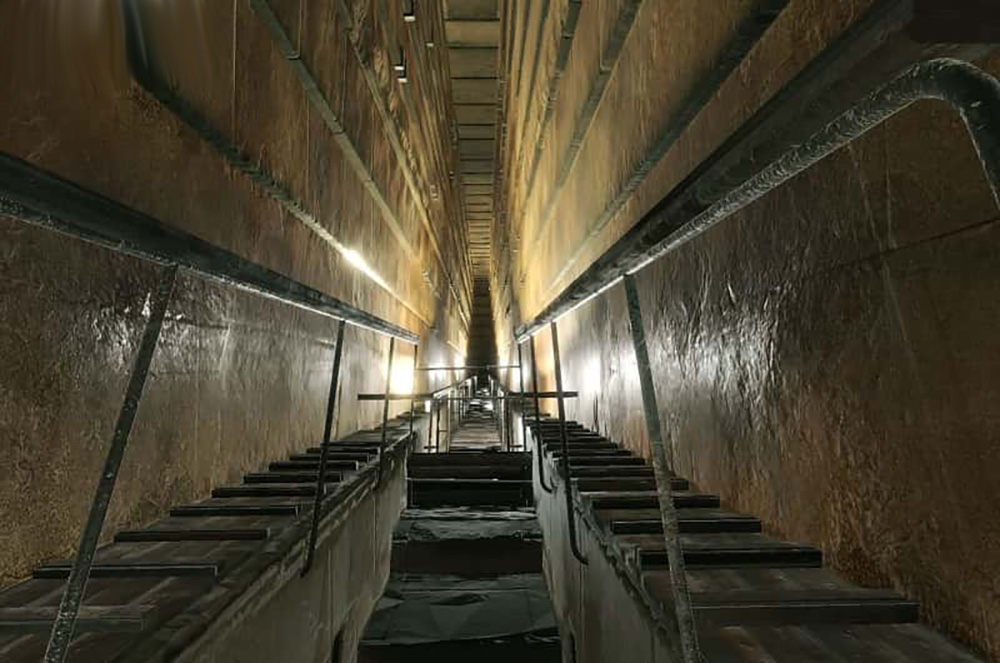
The Grand Gallery has 7-step corbeled side walls. Some parts of the Grand Gallery walls contain salt deposits, but not as much as in the Mid Chamber. The length of the Grand Gallery is 1881.5985600+ PI, and its width just above the ramp stones is 82.41 PI. The Grand Gallery is 28 feet high by 1881-1/3 PI long.
The length of the horizontal passage to the Queen's Chamber is 1521.31136 PI. The name "Queen's Chamber" is considered a misnomer by Egyptologists since no queens have ever been found in pharaoh's pyramids. The volume of the Queen's Chamber is 9,963,200 cubic PI. The Grand Gallery contains two grooves, one in the east wall and one in the west wall. They are 7 inches high, 1 inch deep, and 5 inches up from the 3rd overlapping corbel. They run the entire length of the gallery. The Queen's Chamber has a gabled roof.
The Pyramid contains two interior chambers and a number of interior shafts. The interior shafts all generally lie in a north-south vertical plane section of the pyramid, displaced a little east of the center of the pyramid:
The Entrance shaft starts at an entrance on the north face, a little above ground level, and descends at an angle of about 26 degrees. Since the latitude of Giza is about 30 degrees North, if you go into the entrance shaft and look back, you will see a part of the sky centered about 4 degrees from the North Pole in the sky. If you could see through the ground and the Earth as you looked forward going down the Entrance shaft, you would see an area near the South Pole in the sky.

Egypt: Pictures: Ancient "Solar Boat" Unearthed at Pyramids
National Geographic - June 25, 2011
Excavating a "Solar Boat" ... For the first time in centuries, a multi-ton limestone slab - one of dozens - floats free of the "tomb" of a 4,500-year-old, disassembled "solar boat" at the foot of the Great Pyramids in Giza (map), Egypt, on Thursday. Below are hundreds of delicate wooden "puzzle pieces," protected by the climate-controlled tent built over the site in 2008. Once the months-long process of extracting the pieces is finished, researchers expect to spend several years restoring the ship before placing it on display in Giza's Solar Boat Museum near the Pyramids.
A similar ship found nearby has already been reconstructed and is on display in the museum. At about 140 feet (43 meters) long, the restored ship is thought to be a bit bigger than its still fragmented sister. Solar boats played an important role in story of the afterlife in ancient Egyptian mythology. Each night the sun god Ra - in the form of the evening sun, Ra-Atum - was thought to sail through the afterlife in one boat to battle gods and beasts until he rose as the morning sun, Ra-Horakhty, and sailed his day boat across the sky. Buried near the Great Pyramid, the buried sister boats were likely intended to assist Pharaoh Khufu on similar journeys during the afterlife.